


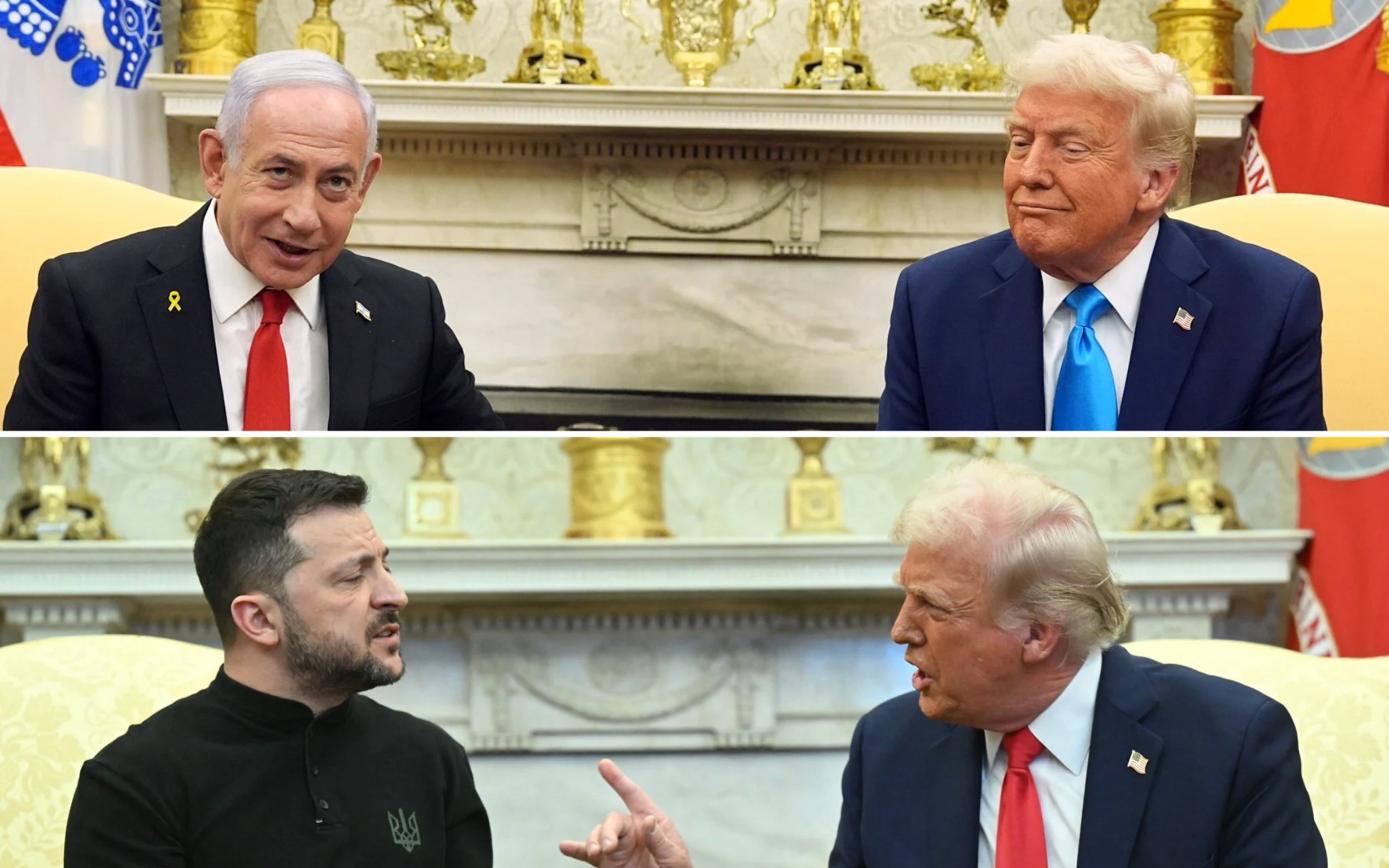
The course of the two conflicts that have dominated the global agenda in recent years could be set this week, as Europe tries to figure out its response to growing White House hostility toward Ukraine, and the ceasefire in Gaza moves beyond its surprisingly resilient first phase.
In both wars, the positions — and often mind-boggling statements — of US President Donald Trump loom large. But as Europe scrambles to come up with a response to the angry new American approach to Kyiv, Israel finds itself with no overt criticism from the Trump administration and wide freedom of action as it seeks to achieve its key war goals of destroying Hamas and bringing home all remaining hostages.
Western leaders and Ukrainian President Volodymyr Zelensky met in London on Sunday after a disastrous visit by the wartime leader to the Oval Office. Trump and Vice President J.D. Vance had berated Zelensky on live TV, confirming the worst fears in Kyiv and European capitals about Trump’s vision for ending the war in Ukraine.
In response, 18 mostly European leaders hurried to London to embrace Zelensky, a stark contrast from the dressing down he received in Washington.
“We are at a crossroads in history today,” said British Prime Minister Keir Starmer.
They certainly are. It’s just unclear how the leaders in London will get history to move down their desired path.
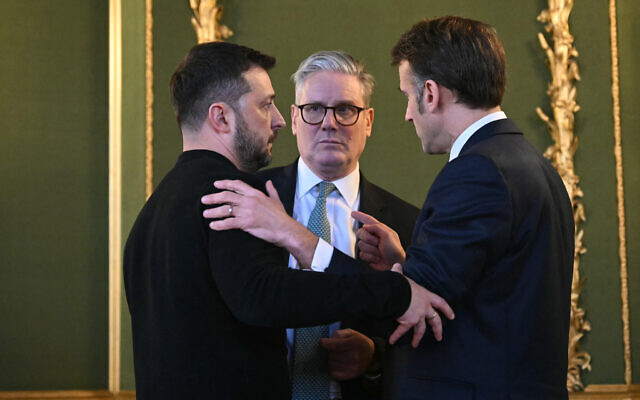
The Europeans are first of all trying to figure out a way to get Trump and Zelensky talking again, with the hopes that the two will finally sign a mineral deal that could lay the groundwork for a postwar economic and security arrangement with enough US involvement to keep the Russians from violating any armistice.
But with Trump emphatically choosing to pursue an end to the war over the defeat of Russia, a larger challenge remains. “The free world needs a new leader,” said EU foreign policy chief Kaja Kallas last week.
Rhetoric aside, Europe will struggle to fill that role in any practical sense, and certainly when it comes to Ukraine.
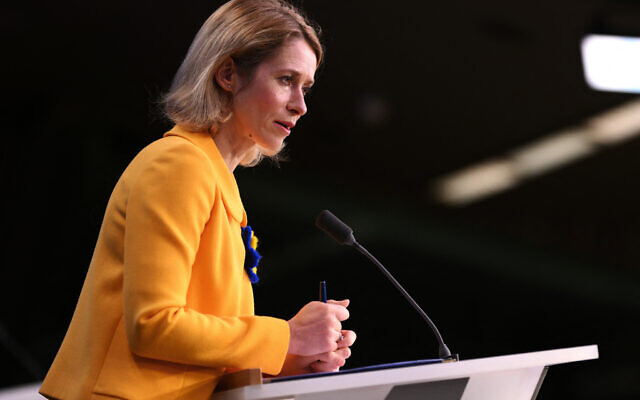
Zelensky believes that deterring Russia in postbellum Ukraine would take a minimum of 200,000 peacekeepers in his country. But Europe is unable to provide anything close to that number, and top US officials rule out sending American soldiers to Ukraine.
Britain and France, two of NATO’s most powerful non-US militaries, are calling for a European “reassurance” force of under 30,000 troops, which officials say would be focused mainly on air and maritime defense.
But even that would be largely impotent without significant US backing.

For example, when fighting against Muammar Qaddafi’s dilapidated Libyan army in 2011 European NATO countries began running short of munitions before a month had passed.
Libya “has not been a very big war. If [the Europeans] would run out of these munitions this early in such a small operation, you have to wonder what kind of war they were planning on fighting,” John Pike, director of GlobalSecurity.org, told The Washington Post at the time. “Maybe they were just planning on using their air force for air shows.”
Even as the Europeans were ostensibly taking the lead in Libya, the US still flew 80% of intelligence flights and did almost the same percentage of midair refueling. “In effect,” wrote Chris Brown of the London School of Economics, “Europe flew the planes and attack helicopters, but most of the time they were firing US munitions at targets identified by the US in operations coordinated by US technology.”
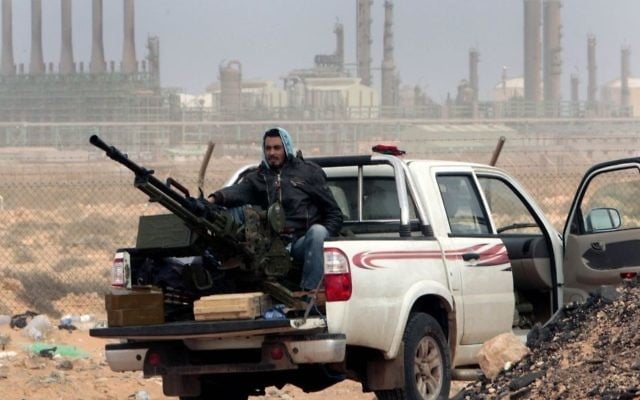
European defense spending has surged over the last decade, but so has Russia’s. EU member states spent an estimated €326 billion on defense in 2024, but would have to raise that number by €250 billion a year if they want to create a meaningful deterrent against Russia, according to European economic think tank Bruegel.
“If defense spending is to be permanently higher,” wrote Financial Times chief economic commentator Martin Wolf on Tuesday, “taxes must rise, unless the government can find sufficient spending cuts, which is doubtful.”

Russia isn’t likely to take European will especially seriously either.
If they aren’t willing to accept Ukraine into NATO over fears that they could be drawn into a conventional war with nuclear-armed Russia, why would European states be willing to fight if their peacekeepers are attacked in Ukraine? And if their limited tanks didn’t come rumbling across the continent during the three years of war in Ukraine to date, why would they be more serious about committing them to the fight if Russia violates a ceasefire?
There are no easy answers for Europe. But while its leaders may be mostly infuriated by Trump’s positions and his treatment of Zelensky, they are being extremely careful about how they talk about the situation. A phrase taken the wrong way by the thin-skinned American president could send careful efforts to produce effective US-European dialogue on Ukraine skidding off the tracks.
While politicians sweat in Europe, Israel’s government — which endured from these same European leaders months of condemnation, quiet arms embargoes, and pressure to end the Gaza war with Hamas still in power — is acting with fresh confidence because of the US president.
In these first weeks of his second term, Trump has been everything Prime Minister Benjamin Netanyahu could have wanted, and more. The president restored the maximum pressure policy against Iran and its nuclear program. He and his team have promised repeatedly to work with Israel “to ensure Hamas is eliminated” — not just pushed out of ruling Gaza. He wants to broker the Saudi-Israeli normalization deal. And he is going after the International Criminal Court for targeting Israel’s leaders, with obsessive Israel critics like South Africa and Ireland in the crosshairs.
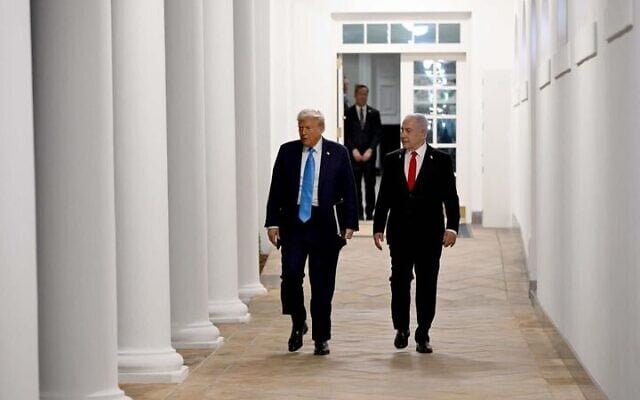
Even as Netanyahu has avoided any movement toward the second phase of the hostage deal with Hamas, despite Israel’s commitment to do so, Trump has shrugged his shoulders.
“I really am,” he said in response to a question about whether he is fine with whatever choice Netanyahu makes on a hostage deal. “You do whatever you want,” Trump says he has told Netanyahu.
In the short term, at least, it is clear what Netanyahu wants and doesn’t want in the deal with Hamas. He is looking to force the terror group into an extension of the hostage-ceasefire agreement’s first, 42-day phase, which expired on Saturday. That would see more living hostages released, and more Palestinian security prisoners freed in exchange, but without an Israeli commitment to end the war.

It remains unclear whether Netanyahu himself wants to return to war, or to prioritize a return to the fighting over efforts to secure the release of the hostages. But he has coalition partners and even close advisers who will not accept an end to the military campaign while Hamas remains in power, an Israeli official told The Times of Israel.
A potential 50-day extension to the ceasefire, under a plan concocted by Strategic Affairs Minister Ron Dermer and Steve Witkoff, according to the official, is a way for Netanyahu to avoid a decision on whether to restart the war.

In order to push Hamas to agree to an extension that goes against its interests as well as the terms of the agreement that the US, Europe, and Arab countries so eagerly backed, and that Israel and Hamas signed off on in Doha, Netanyahu is now proudly and brazenly cutting off aid from reaching Gaza, during Ramadan no less.
This isn’t the first time Israel has restricted aid to pressure the terror group during the war. Yet it rarely boasted about it. When Israel was trying to isolate northern Gaza in the final weeks of the Biden administration, sparking a warning letter from secretary of state Antony Blinken and defense secretary Lloyd Austin, Israel denied there was any restriction on aid.
With a mercurial and energetic Trump in the Oval Office, Europe’s reaction to Israeli policies on aid has been very different from what it was under Biden.
On Sunday, the EU chose to condemn Hamas for its refusal to extend the first phase of the ceasefire. On Israel’s publicly stated intention to keep aid out of Gaza, the EU only warned that the move “could potentially result in humanitarian consequences,” and avoided directly condemning Israel.
With a mercurial and energetic Trump in the Oval Office, Europe’s reaction to Israeli policies on aid has been very different than it was under Biden.
With their own security suddenly more precarious, European leaders are taking pains not to unnecessarily butt heads publicly with Trump, including on Israel.
Europe isn’t the only region where US allies are scrambling to respond to Trump.
Egypt and Jordan found themselves unexpectedly in Trump’s crosshairs when he proposed clearing out Gaza and resettling its residents in the two countries, both of which see the absorption of large numbers of Palestinians as unthinkable, destabilizing, and the crossing of a red line.
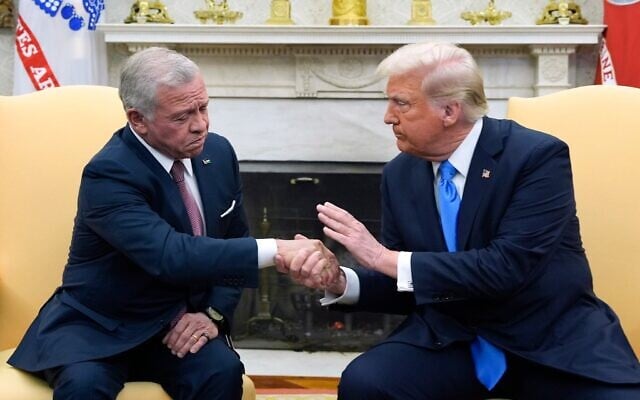
Jordan’s King Abdullah chose to face Trump directly in Washington, and rather elegantly managed to avoid being seen as complicit in the plan while staying in the president’s good graces.
Egypt’s President Abdel-Fattah el-Sissi took the opposite approach, choosing to avoid meeting Trump in the wake of his Gaza proposal.
Yet that doesn’t solve the dilemma for Cairo or the Arab world. If they want to forestall Trump’s plan to turn Gaza into a US-owned Riviera, Arab leaders need to come up with a realistic plan that Israel and the US accept.
Egypt is taking the lead. It was hosting on Tuesday an emergency Arab summit in Cairo at which it was to present its Gaza reconstruction plan. The proposal envisions a government led by technocrats unaffiliated with Hamas, and a gradual cleanup operation followed by the rebuilding of Gaza.
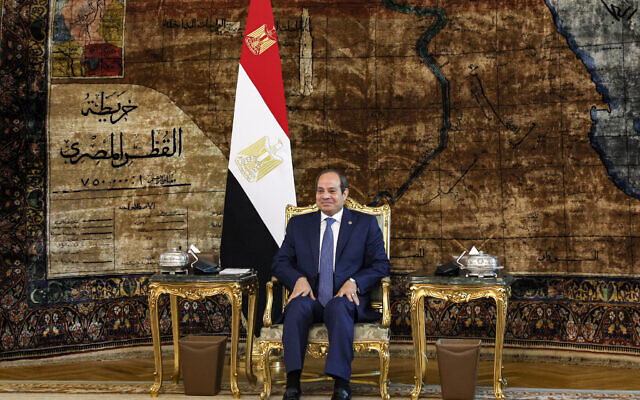
Palestinians would not be relocated outside of the Strip, and Hamas leaders, while not officially ruling Gaza, would not be exiled.
The proposal is unlikely to be adopted by Trump, and therefore won’t be endorsed by Netanyahu, who is determined to avoid even a sliver of daylight between him and the US president.
Unlike Zelensky, Netanyahu has shown an uncanny ability to understand the US president and remain in his good graces.
As America’s allies in Europe and the Middle East struggle to find a response to Trump, therefore, Netanyahu finds himself with US-backed freedom of action and presidential support. And, unlike Zelensky, Netanyahu, who fell out with Trump after congratulating Biden on his 2020 presidential victory, has since developed an ability to understand the US president and remain in his good graces.
The prime minister’s bellicose speech to the Knesset on Monday evening, in which he painted himself as the victim of an ostensible series of false allegations concocted by the deep state and its corrupt mainstream media, was meant in good part for Trump’s ears.
To date, however, none of Netanyahu’s key war goals have been achieved, and none of his other core promises have been fulfilled. Iran’s nuclear program continues to progress. Relations with Saudi Arabia are not normalized. Hamas, still kicking, rules Gaza. And it is still holding 59 hostages.
